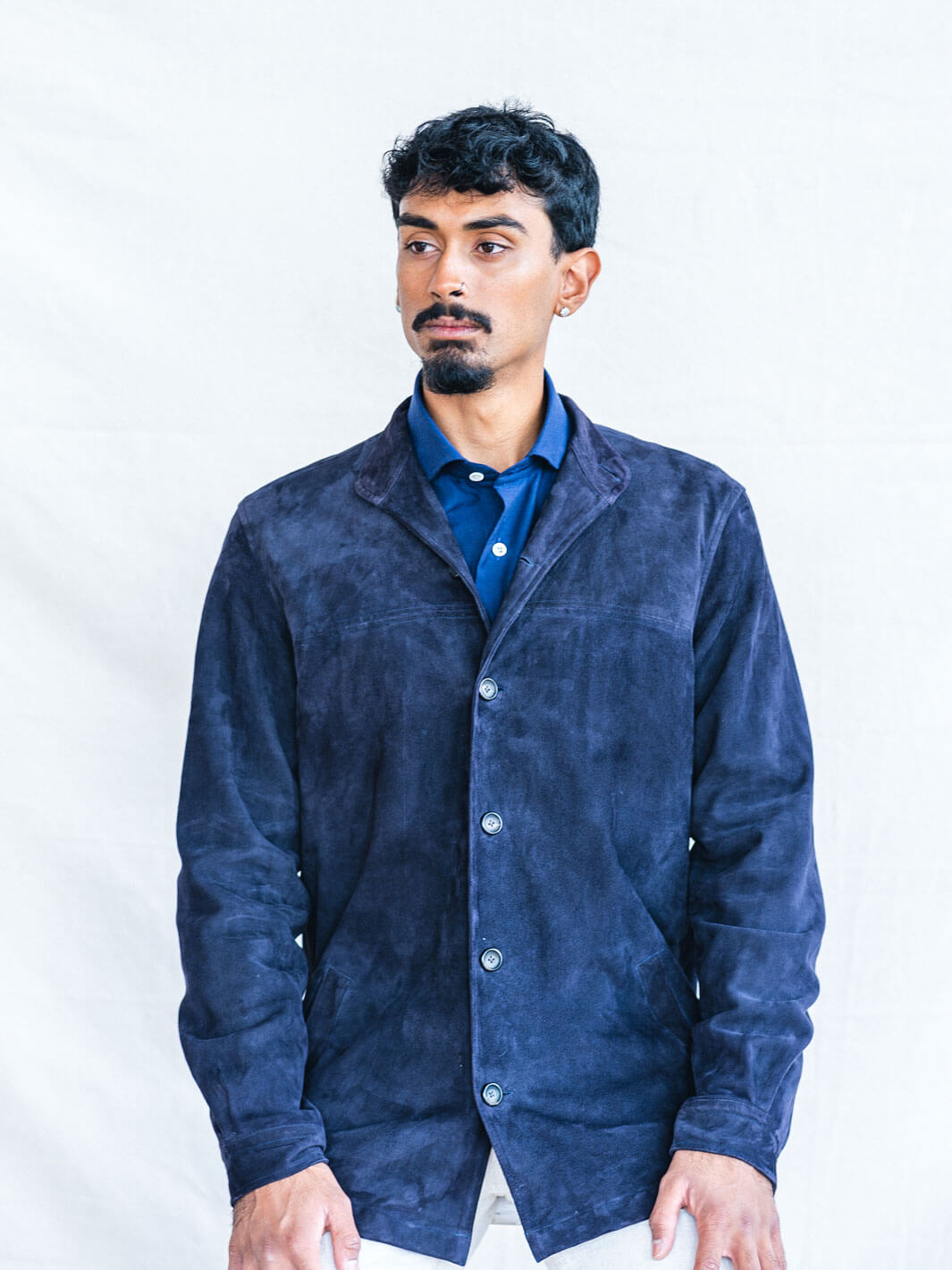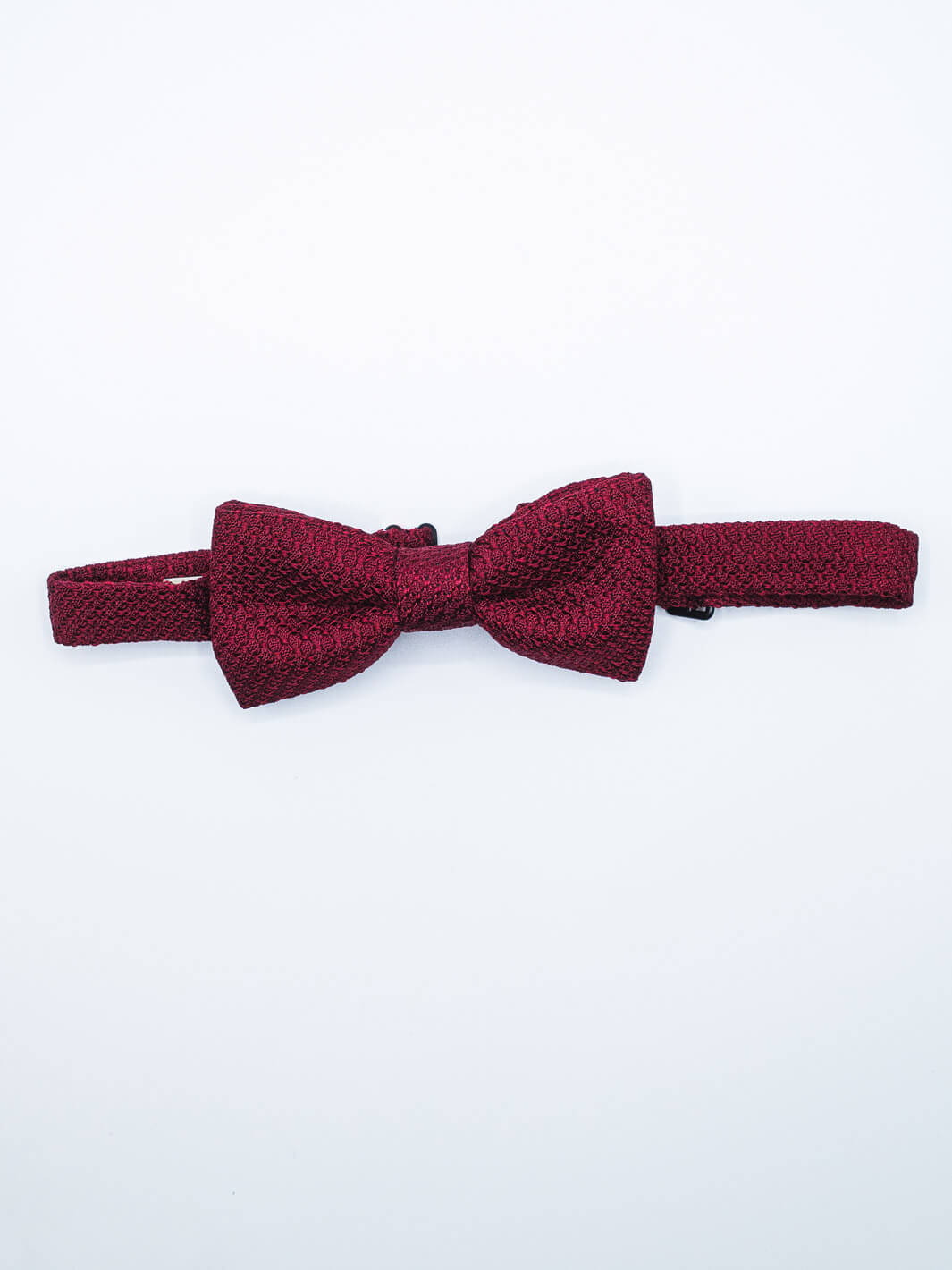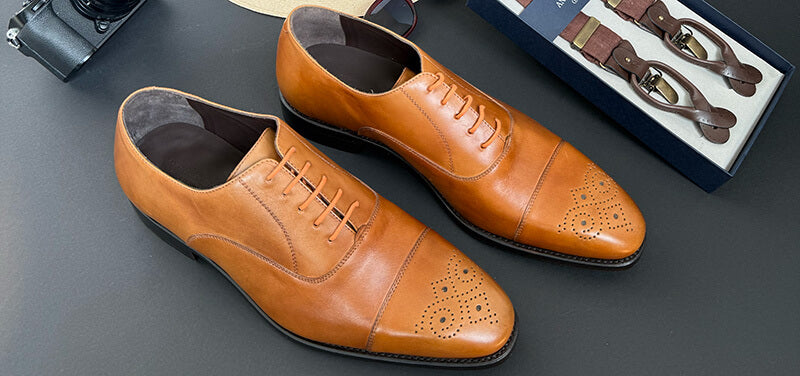In this first installment of our fabric series, we explore Linen: a superior warm weather fabric that has kept man cool since time immemorial.
What is Linen?
Linen has been a classic of men's style for centuries, renowned for its luxurious texture, lightweight feel, and relaxed elegance. From the ancient Egyptians who adorned their pharaohs in finely woven linen garments to the modern-day gentleman who sports a linen suit at an outdoor wedding, this fabric has remained a staple in classic menswear for good reason.
Linen suits, in particular, have become a staple in summer dressing, offering a refined yet relaxed style that's perfect for warm-weather occasions. And while it's often associated with lighter shades like beige, cream, and light gray, linen can also be found in darker colors like navy or black, making it a versatile option for any wardrobe.
A Brief History of Linen
Linen has a rich and long history that dates back to ancient times. According to the book The Golden Thread by Kassia St. Clair, linen was one of the first textiles produced by humans, with evidence of its use dating back to the Neolithic era. The ancient Egyptians were known to have used linen extensively, and it was even considered a symbol of purity and wealth. In fact, linen was so highly prized that it was used to wrap the bodies of pharaohs in preparation for their journey to the afterlife.

The production of linen became a highly skilled trade in Europe during the Middle Ages. Linen cloth was highly valued for its strength and durability, and was commonly used to make clothing, bedding, and household items such as tablecloths and towels. The linen trade became a major industry in many parts of Europe, and linen production was often regulated by guilds.
During the Industrial Revolution, linen production became mechanized, making it more accessible and affordable to the masses. However, the popularity of linen began to decline in the early 20th century as synthetic fabrics like polyester and nylon were introduced. Today, linen remains a luxury fabric that is highly prized for its natural beauty and durability.
Importance of Linen in Today's World
Linen is one of the most sustainable fabrics available in the fashion industry. Its ecological impact is minimal due to the nature of its production process. It is also biodegradable, making it an eco-friendly option for consumers who care about sustainability.
In addition to its minimal environmental impact, linen is also a durable fabric that can last for years with proper care. This means that consumers can invest in high-quality linen garments that will not only stand the test of time, but also reduce their overall consumption of clothing.
When it comes to washing linen garments, it is important to follow care instructions to avoid damaging the fabric. Linen should be washed in cold water and hung to dry, rather than using a dryer. This not only helps to preserve the fabric, but also reduces energy consumption.
How Is Linen Made?
Linen comes from the flax plant, a crop that is said to be one of the oldest domesticated plants known to man, sitting side by side with other “founder crops” like emmer wheat and barley.
Flax plants have a short growing cycle (about 5 months), which means they can be planted in March and harvested in July. Since flax fibers are found not only in the stem, but also in the root, it must be pulled out of the ground with a mechanical grubber.
From there, the uprooted plant goes through a “retting” process, so that the flax fibers can be carefully separated from the outer layer. This is done by deliberately exposing the plant to moisture.
Once it’s ready, the plant then goes through another mechanical process of scutching and hackling to extract the valuable flax fibers from the stem. But before the fibers can be transformed into the soft, luxurious linen fabric we all know and love, they must first be combed and spun into fine yarns. The spinning process depends on the length of the yarn: long, fine yarns are wet spun for a smooth and shiny appearance, while short yarns are either semi-wet spun or dry spun for a coarser feel.
They’re then tested for quality. Characteristics like strength and color, as well as evenness, must all be certified before the yarn is woven into linen fabric using shuttleless looms.
Properties of Linen
One of the great features of linen is that, by nature of its thick fibers, it can be readily woven into something called a plain weave. This is a type of weave that allows more air to pass through, thus cooling your body and reducing discomfort. Linen can also be found in knitted garments, like polos, in a twill stitch. Additionally, linen is not only highly absorbent, but it also has the unique ability of drawing moisture away from your body and onto the fabric's surface. This means that much of the sweat you produce will evaporate quickly before it sets in.

Strong and durable, linen fibers are much thicker than cotton, which makes it highly resistant to wear and tear. This means that linen clothing can last for many years with proper care. It's also resistant to pilling, which is when small balls of fabric form on the surface of a textile due to wear and friction. So, if you want a fabric that retains its smoothness long past the date that other fibers do, then linen is going to be your cloth of choice.
How to Wear Linen
• Embrace Wrinkles
When it comes to wearing linen, it's important to keep a few things in mind. Firstly, embrace its signature look! Linen is known for getting easily wrinkled while you wear it, but a relaxed linen garment is the epitome of sprezzatura (“effortless style”). So, embrace its casual, laid-back look and don't stress too much about keeping it perfectly pressed.
However, it does pay to reserve a heavier linen fabric for semi-formal events like business luncheons and outdoor weddings because they don't wrinkle nearly as much as lighter ones. But if you're out in the sweltering heat with your friends, a lightweight garment is the way to go!
• Choose a Weight: Irish vs Italian?
Despite what you may have heard, Irish linens are not always going to be heavier than Italian linens. In fact, with today's variety, you can custom order Italian linens that weigh 13oz or more, and Irish linens that weigh only 8oz. For example, we carry a heavyweight Italian linen from Solbiati's Art Du Lin collection, which weighs as much as 19oz. These are great if you want a good drape with minimal wrinkling.The difference lies in how they're spun. Irish linens tend to be on the courser side, and this is what most people in the UK have grown to prefer. Italian linens, on the other hand, are known for their softer hand, which mirrors the laid back aesthetic found in Florence and Milan. This is simply a matter of taste. Personally, we enjoy the courser hand of Irish linens for suit jackets if we want to up the formality. But for dress shirts and polos, we appreciate the softer touch of linen fabric woven by Italian mills.
• Consider a Blend
Additionally, consider a blend. Linen shirts look great mixed with cotton (e.g., 70% linen / 30% cotton). They're both breathable fibers, yet when combined, reduces some of the wrinkling that occurs in a pure linen shirt. This will afford you a sharper look without compromising on the garment's weight or ability to keep you cool when you need it most.For suits, you can choose a wool/silk/linen blend. But make sure to reserve silk for jackets, as silk tends to stretch out the shape of your trousers, giving off a sloppy appearance. So if you plan on sitting/moving around in them a lot, opt for a wool-linen blend instead.
• Find a Good Fit
Choose well-fitted pieces that won't look too sloppy or oversized. Linen's relaxed texture already lends itself to a more casual aesthetic, so you don't want to go overboard.• Textures & Colors
Lastly, don't be afraid to mix and match textures. Linen pairs well with other lightweight fabrics like cotton or seersucker, and it comes in a variety of colors from neutrals to brights.
Just be mindful of how you match colors. If you're going for a linen jacket and want to wear, say, a pair of tropical wool trousers, you have some freedom to play with a palette of colors. But if it's a hot day in Alabama, and you're considering wearing full linen attire (top and bottom), we recommend choosing one color and sticking with it.
Made-to-Order Linen
Looking for Irish linen? How about Italian? Anatoly & Sons carries both!
Our Made-to-Order option allows you to buy linen shirting made from top Italian mills like Monti, Canclini, and Thomas Mason. These come in a variety of weights that range from light to heavy.
We also work with Dugdale Bros.—an iconic cloth merchant out of Huddersfield, England—which sources some of the highest quality Irish linen on the market. These are then incorporated into our jackets, vests, and trousers.
Overall, linen is a beautiful summer fabric that every man should have in his wardrobe.
Shop our Linen Shirt Collection
For more info on our MTO shirts: Contact Us
Part II: The Definitive Guide to Cotton









